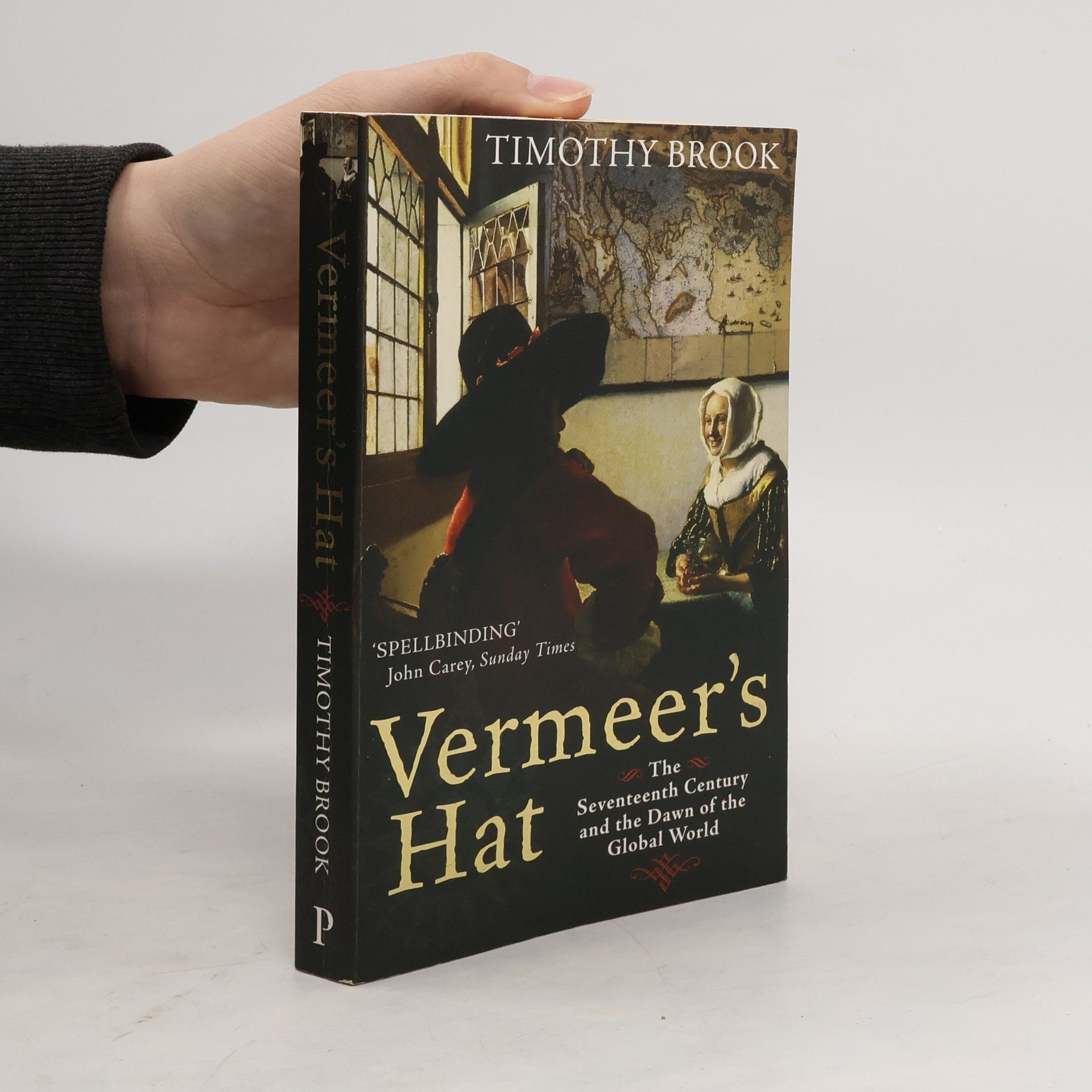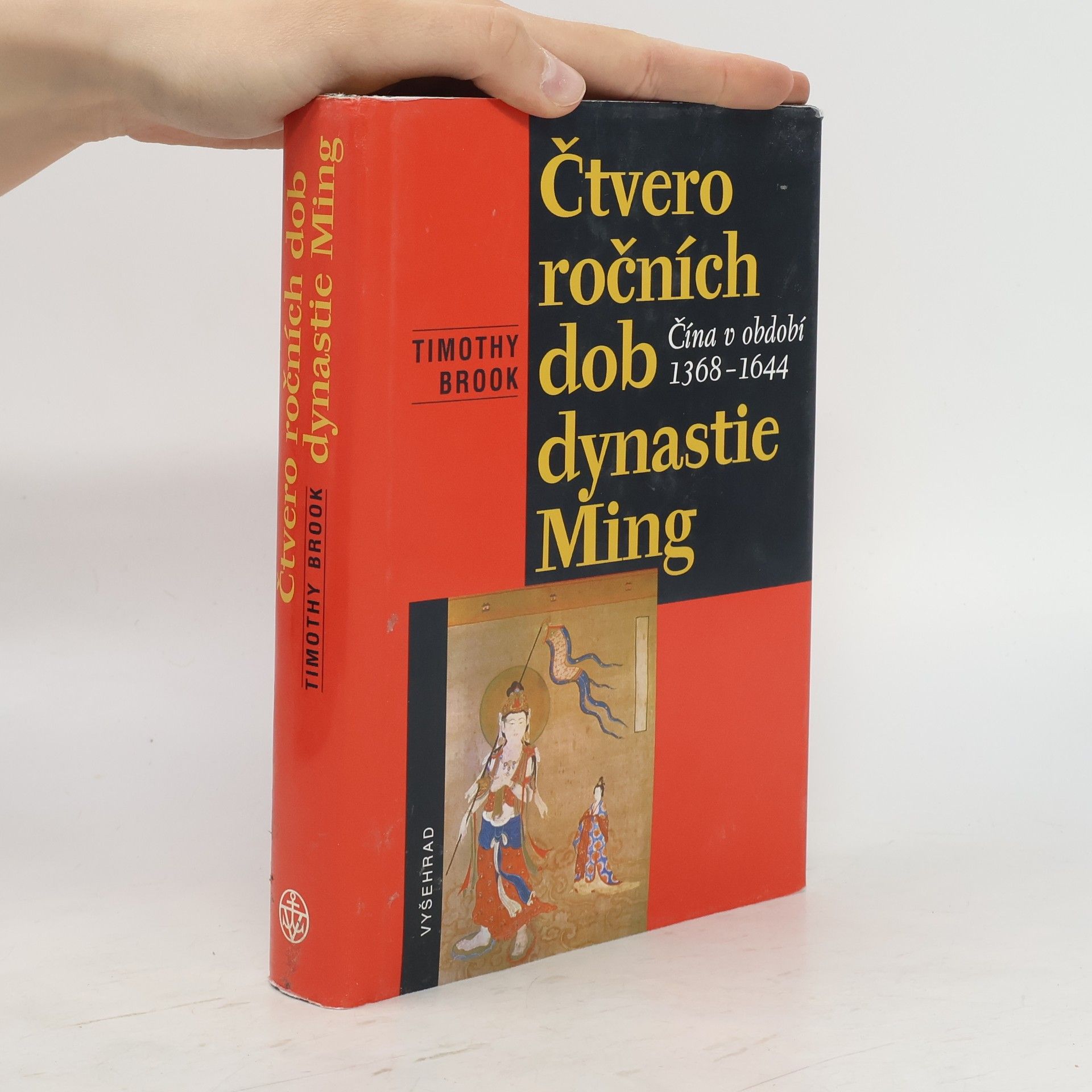Mingská dynastie, poslední velký císařský dům před mandžuským záborem v roce 1644, vládla v Číně téměř tři století, kdy byla Čína středem světa. Timothy Brook v této knize poutavě zobrazuje proměny života během mingského období, kdy se Čína transformovala z agrární země na centrum obchodních zisků a prestižních bojů. Hlavním tématem jsou sociální a kulturní dějiny spojené s komercionalizací. Brook využívá rukopisné poznámky mingského hodnostáře Čang Tchaa a svou rozsáhlou četbu mingských pramenů, aby ukázal, jak obchod formoval čínskou společnost. Obchod přetvářel vztahy mezi spotřebiteli a výrobci, což zasahovalo do konfuciánských hodnot. Znalosti se měnily na zboží a rolníci se začali věnovat tkalcovství a výrobě keramiky, po které toužilo městské obyvatelstvo. Nové obchodní bohatství se však pomalu dostávalo k chudým vrstvám společnosti. Městská elita, která bohatství soustředila, vytvořila novou sociální základnu moci. Text se prolíná úvahami Čang Tchaa o různých profesích a každodenním životě. Kniha se odklání od tradiční historiografie a místo politických událostí se zaměřuje na obyčejné lidi a jejich výzvy v rychle se měnícím světě, čímž přispívá k novému pohledu na dynastii Ming a čínské dějiny.
Timothy Brook Knihy
Timothy Brook je kanadský historik a sinológ, ktorý sa špecializuje na štúdium Číny. Jeho práca sa ponorila do sociálnej a kultúrnej histórie dynastie Ming, skúma právo a trest v cisárskej Číne a zaoberá sa otázkami kolaborácie počas japonskej okupácie Číny a vojnových zločinov v Ázii. Zaoberá sa tiež globálnou históriou a historiografiou, čím ponúka komplexný pohľad na minulé udalosti.







This is a riveting, day-by-day, hour-by-hour reconstruction of the massacre in Tiananmen Square on June 3-4, 1989, as well as of the crucial events in Beijing during the previous weeks that largely precipitated the massacre. The author focuses on the army—the People's Liberation Army—which, with its motto "Serve the People," had always prided itself on its close ties to the civilian population. What were the intentions of the Chinese government in mobilizing the army against civilians? Why did the troops act as they did, and what does this say about how the army would act on the next such occasion? How does the military suppression of the democracy movement help us to understand China's current predicament over democratization and human rights?
The Chinese State in Ming Society
- 260 stránok
- 10 hodin čítania
Focusing on the Ming dynasty's influence on state-society relations, this collection of essays challenges traditional views by asserting that societal responses, rather than dynastic fluctuations, shaped China's constitutional framework. The author, a prominent scholar, highlights how shifts in commercial relations and social networks contributed to societal stability. Richly illustrated and rigorously researched, this work offers a fresh perspective on Chinese history, making it essential reading for scholars and students intrigued by China's development.
Offers an understanding of Vermeer's paintings and of the era they portray.
The Troubled Empire
- 336 stránok
- 12 hodin čítania
The Mongol takeover in the 1270s changed the course of Chinese history. The Confucian empire - a millennium and a half in the making - was suddenly thrust under foreign occupation. This title explores what happened to China between these two dramatic invasions.
The Confusions of Pleasure
- 345 stránok
- 13 hodin čítania
The Ming dynasty was the last great Chinese dynasty before the Manchu conquest in 1644. This book narrates the changing landscape of life over the three centuries of the Ming (1368-1644), when China was transformed from a closely administered agrarian realm into a place of commercial profits and intense competition for status.
Timothy Brook presents a comprehensive history of China's global interactions over the last eight centuries, drawing on diverse perspectives from civil servants, traders, spiritual leaders, and more. This multifaceted exploration reveals the complexities of China's identity and its intricate relationships with the world, offering insights into a nation often misunderstood. Through vivid accounts of various figures, Brook crafts a rich narrative that highlights both the challenges and triumphs of China's historical journey.
Vermeer's Hat: The Seventeenth Century and the Dawn of the Global World
- 272 stránok
- 10 hodin čítania
Analyzes how the works of Vermeer reflect seventeenth-century life and the birth of globalization, in a historical study that identifies significant objects in key paintings while explaining how they also serve to document their time's growing web of trade throughout the world. Reprint. 25,000 first printing.
Mr Selden's Map of China. Wie China nach Europa kam, englische Ausgabe
- 256 stránok
- 9 hodin čítania
In 1659, a vast and unusual map of China arrived in the Bodleian Library, Oxford. It was bequeathed by John Selden, a London business lawyer, political activist, former convict, MP and the city's first Orientalist scholar. Largely ignored, it remained in the bowels of the library, until called up by an inquisitive reader. When Timothy Brook saw it in 2009, he realised that the Selden Map was 'a puzzle that had to be solved': an exceptional artefact, so unsettlingly modern-looking it could almost be a forgery. But it was genuine, and what it has to tell us is astonishing. It shows China, not cut off from the world, but a participant in the embryonic networks of global trade that fuelled the rise of Europe - and which now power China's ascent. And it raises as many question as it answers: how did John Selden acquire it? Where did it come from? Who re-imagined the world in this way? And most importantly - what can it tell us about the world at that time?Brook, like a cartographic detective, has provided answers - including a surprising last-minute revelation of authorship. From the Gobi Desert to the Philippines, from Java to Tibet and into China itself, Brook uses the map (actually a schematic representation of China's relation to astrological heaven) to tease out the varied elements that defined this crucial period in China's history.
Great State
- 442 stránok
- 16 hodin čítania
China is one of the oldest states in the world. It achieved its approximate current borders with the Ascendancy of the Yuan dynasty in the 13th century, and despite the passing of one Imperial dynasty to the next, it has maintained them for the eight centuries since. Even the European colonial powers at the height of their power could not move past coastal enclaves. Thus, China remained China through the Ming, the Qing, the Republic, the Occupation, and Communism. But, despite the desires of some of the most powerful people in the Great State through the ages, China has never been alone in the world. It has had to contend with invaders from the steppe and the challenges posed by foreign traders and imperialists. Indeed, its rulers for the majority of the last eight centuries have not been Chinese. Timothy Brook examines China's relationship with the world from the Yuan through to the present by following the stories of ordinary and extraordinary people navigating the spaces where China met and meets the world. Bureaucrats, horse traders, spiritual leaders, explorers, pirates, emperors, invaders, migrant workers, traitors, and visionaries: this is a history of China as no one has told it before.